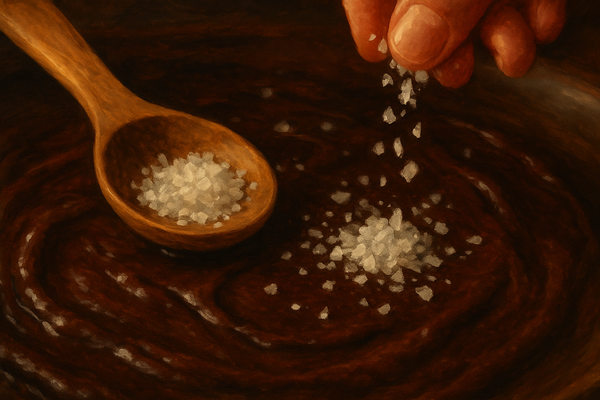
The Quiet Ingredient That Changes Everything
Salt has a bad reputation in dessert. People think of it as the thing you cut back on, not the thing you add.
But every good baker knows the truth: sugar without salt tastes flat. It’s loud but one-note, like a song that never changes key.
Salt doesn’t just balance sweetness. It defines it. It sharpens edges, deepens chocolate, steadies caramel, and pulls fruit back from the brink of syrup.
It’s not an accent. It’s the architecture.
Simple truth: salt is what makes sweet things taste finished.
Why Salt Belongs in Dessert
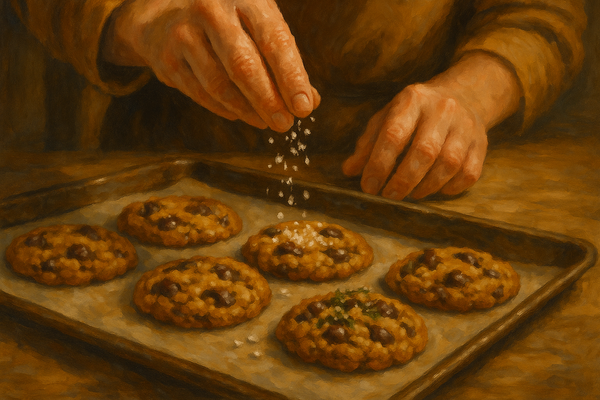
The idea isn’t new. Pastry chefs have known it forever. But it’s worth rediscovering at home.
Salt wakes up sweetness by contrast. It turns sugar from a blanket into a spotlight. A pinch of salt doesn’t make your brownies taste salty. It makes them taste like something.
Without salt, sweetness just sits there.
With salt, it hums.
That’s the magic trick: restraint. A few grains change perception without changing flavor.
The Science (and the Sensation)
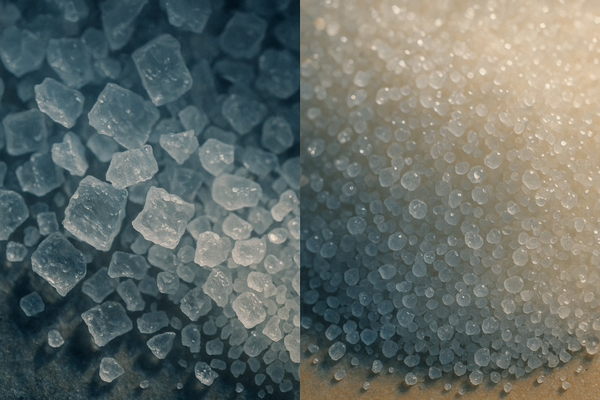
Taste isn’t just one thing happening at once. It’s a conversation between receptors.
Your tongue has clusters that pick up salt, sweet, bitter, sour, and umami. They overlap and influence one another.
When salt hits first, it dulls bitterness and tightens the edges of sweet. That’s why a sprinkle of salt can make chocolate taste darker, or strawberries taste like they’ve been sun-warmed.
There’s a bit of biology to it. Sodium ions in salt literally heighten the way our brains register sweetness. They turn up the volume.
That’s why unsalted caramel tastes sticky and heavy, while salted caramel tastes alive. Salt doesn’t just “balance” sugar. It alters how your brain interprets it.
Butter and salt do a quiet dance too. Salt intensifies the nutty, cooked-milk notes that happen when butter browns.
That’s why a salted chocolate chip cookie feels rounder and more complete than a plain one. The chemistry of fat and salt makes sweetness more dimensional.
It’s not science you notice. It’s emotion disguised as chemistry.
Salt makes dessert taste more human — warm, flawed, believable.
Observation: sweetness without salt is like kindness without honesty. Pleasant, but not real.
How to Use Salt in Sweet Recipes
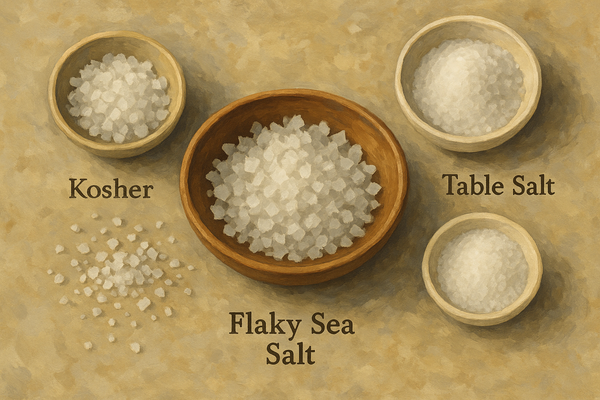
1. Salt the Base, Not the Top (Until You Mean It)
When you bake, always salt the dough or batter. It’s part of the foundation. That’s what keeps cookies from tasting like candy and cake from tasting like air.
Use fine salt here; it dissolves evenly. About half a teaspoon per cup of flour is a safe start.
Then, if you want that “salt hit” moment, the surprise crunch that makes people close their eyes, then add flaky salt on top.
That’s garnish with purpose, not decoration.
2. Salt Your Sugar
This sounds like mischief, but it works.
If you’re making caramel or simple syrup, add the salt early. It fuses into the sugar, not just sitting on top later.
The result? Rounder, deeper sweetness that tastes aged and confident.
3. Salt Beyond Baking
Salt has a place in everything sweet-adjacent:
- Fruit salads (especially melon, berries, and peaches)
- Whipped cream (just a whisper)
- Hot chocolate (one pinch makes it taste like it came from a café)
- Pancake batter (because syrup needs grounding)
Sweetness without salt is static. Salt makes it dynamic.
When Salt Goes Too Far
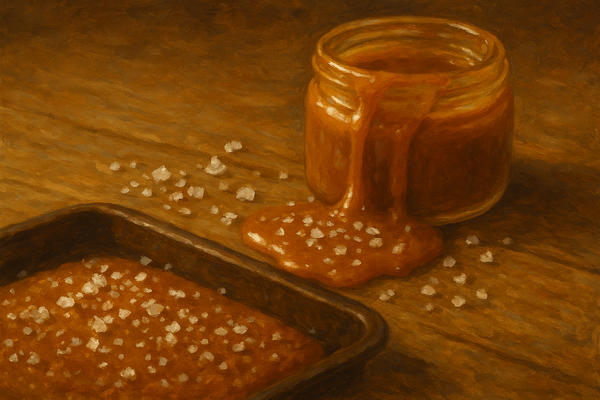
The line between balanced and briny is thinner than you think.
Too much salt in dessert feels jarring. It stops being contrast and starts being commentary.
If someone mentions the salt, you’ve gone too far.
The best use of salt is invisible. You only notice it when it’s missing.
Truth earned: restraint is the hardest flavor to learn.
Salt and Emotion: Why It Works
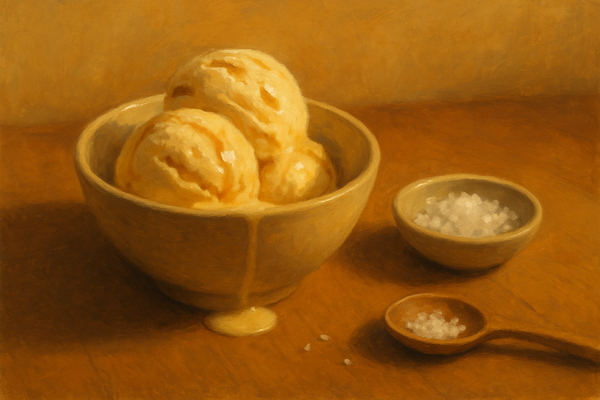
Salt and sugar work the way contrast does in storytelling. Sweetness on its own is simple pleasure. Add a little tension, a little depth, and suddenly it becomes memorable. Salt grounds sweetness in reality. It keeps it from floating off into sentimentality.
There’s a reason salted desserts hit deeper. Salt pulls sweetness closer to how life actually tastes. Not pure, but balanced. A little tension, a little grounding. It makes the familiar feel deeper, more human.
A spoonful of salted caramel or a sprinkle over dark chocolate doesn’t just taste good. It feels honest.
That’s what makes it irresistible. Not indulgence, but recognition.
Salt makes sweetness believable.
Conclusion: The Flavor of Honesty
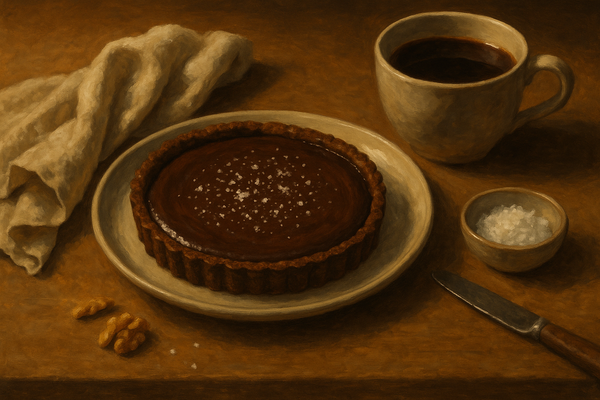
Salt doesn’t compete with sugar. It completes it. That’s the secret most recipes never say out loud.
A pinch here, a flake there, and suddenly your dessert has a story. Highs, lows, and something true running through it.
Because good food, like good writing, needs contrast.
And the best desserts taste a little like life. Sweet, yes. But never without a trace of salt.
